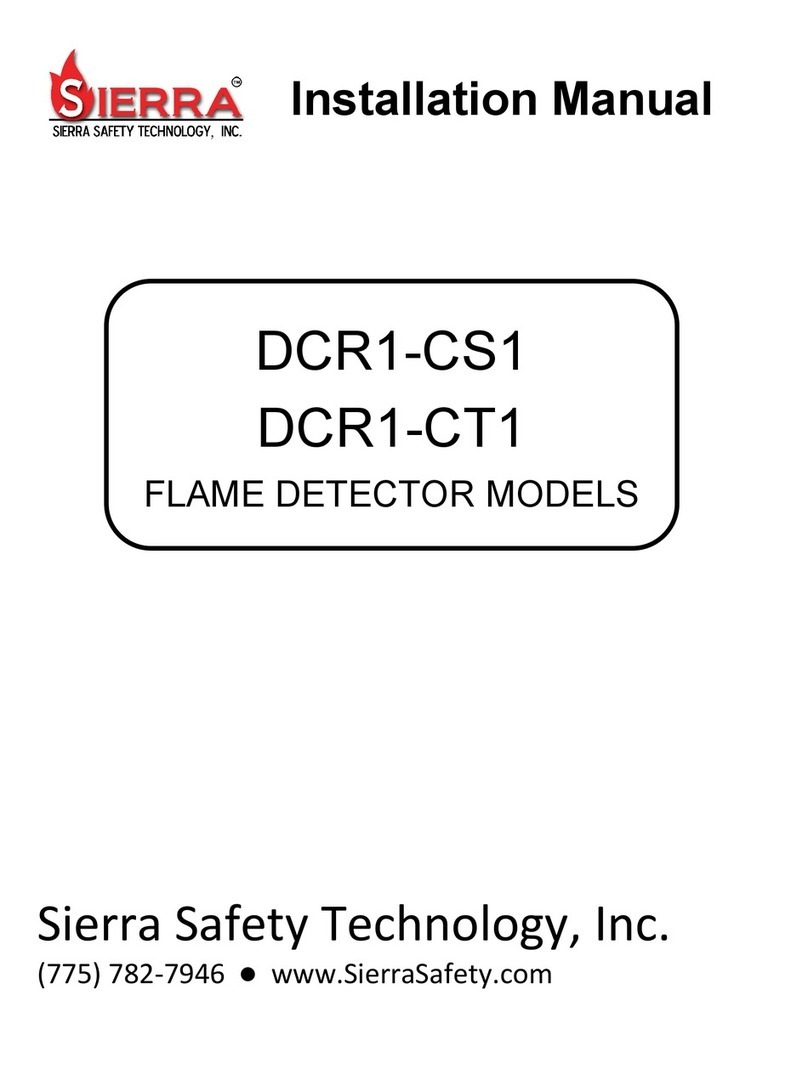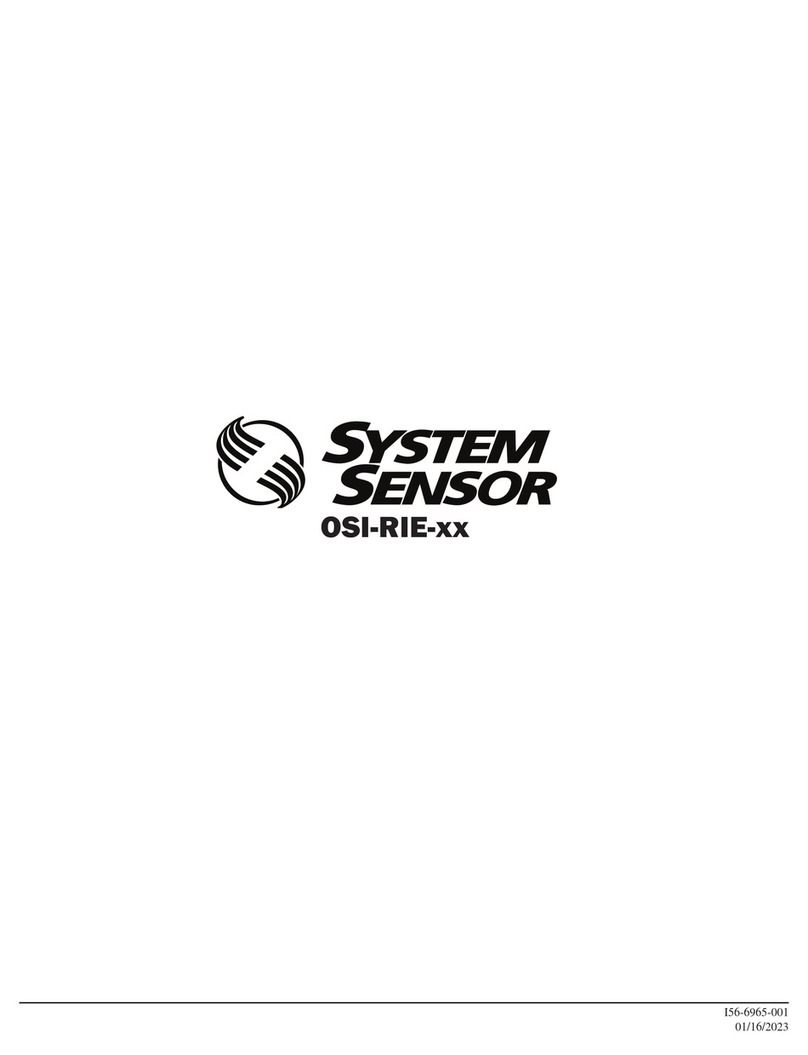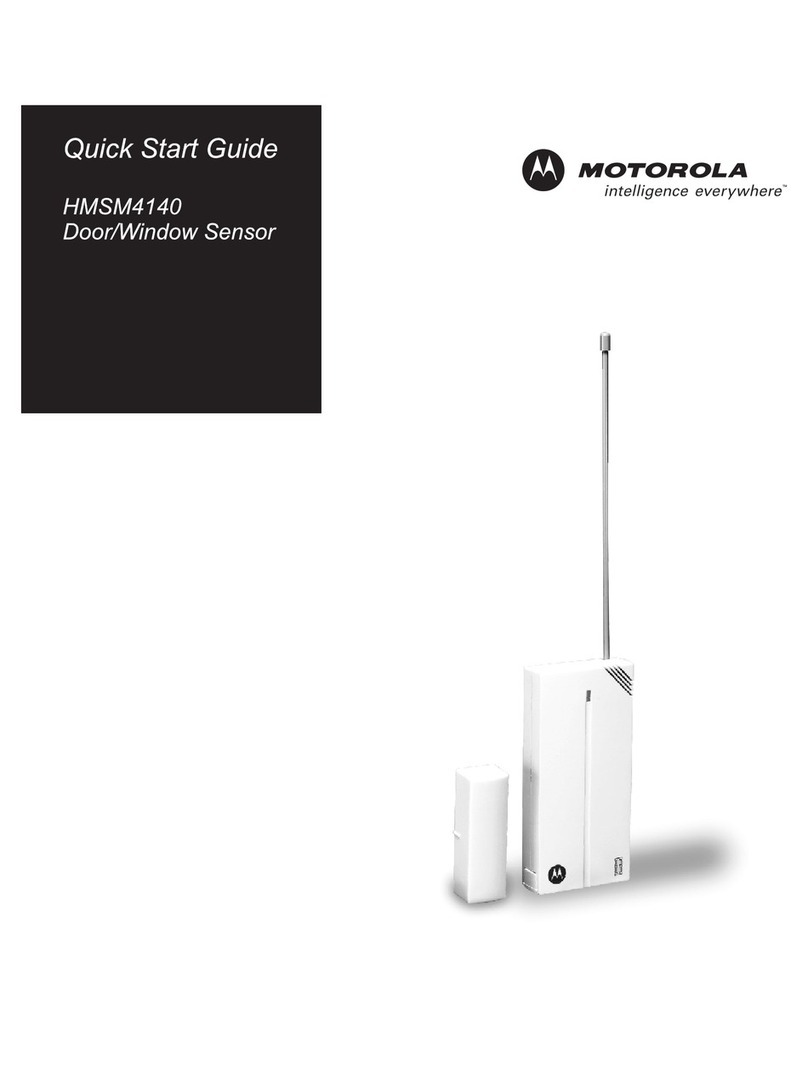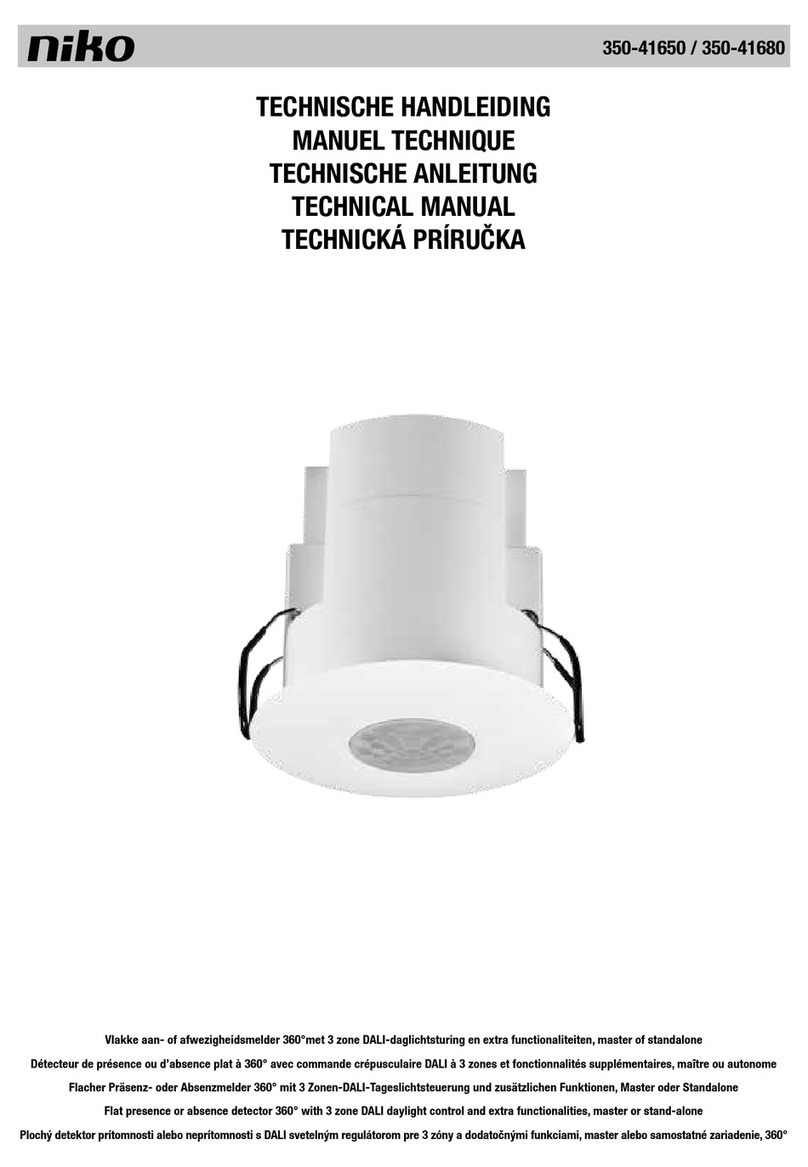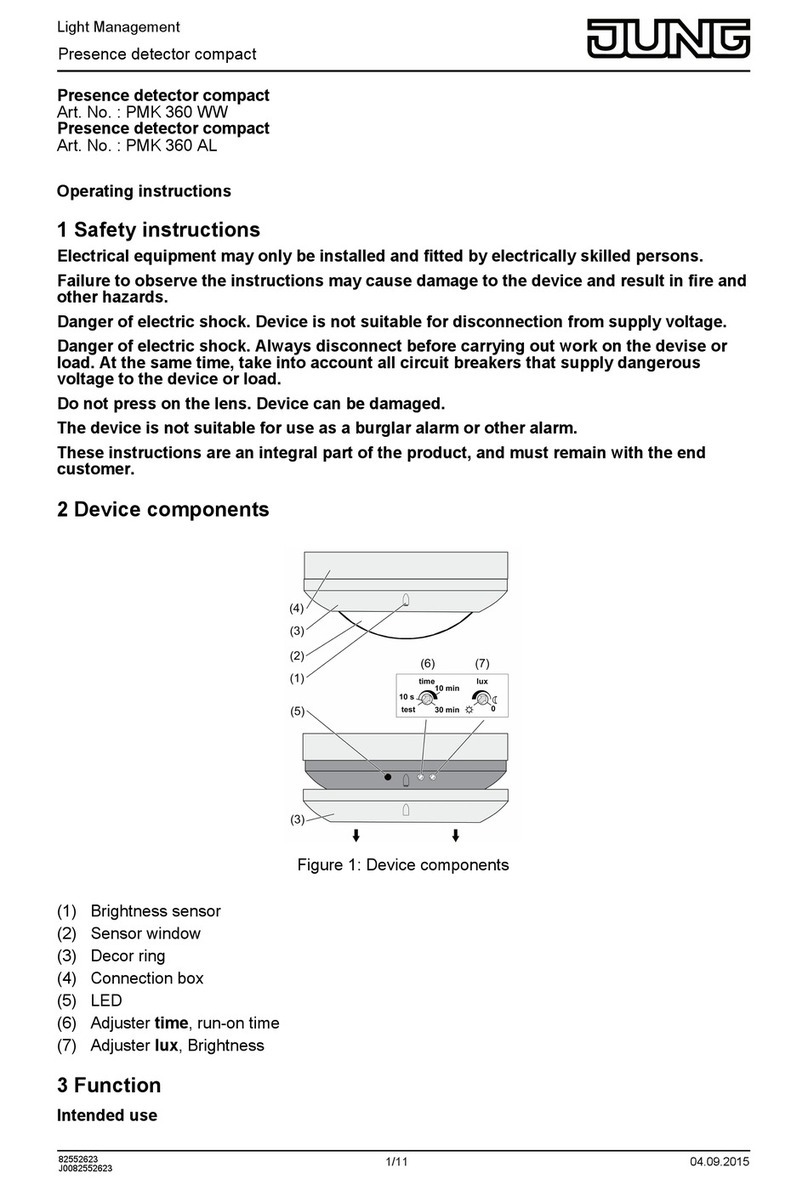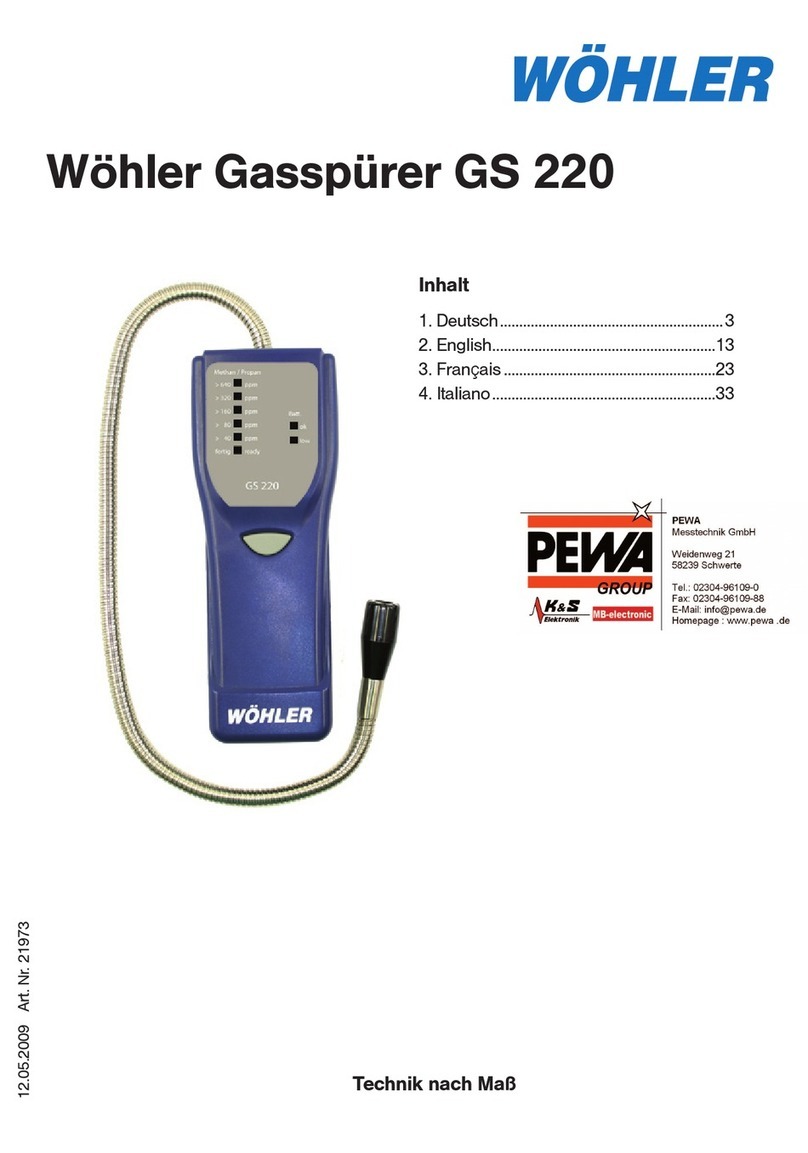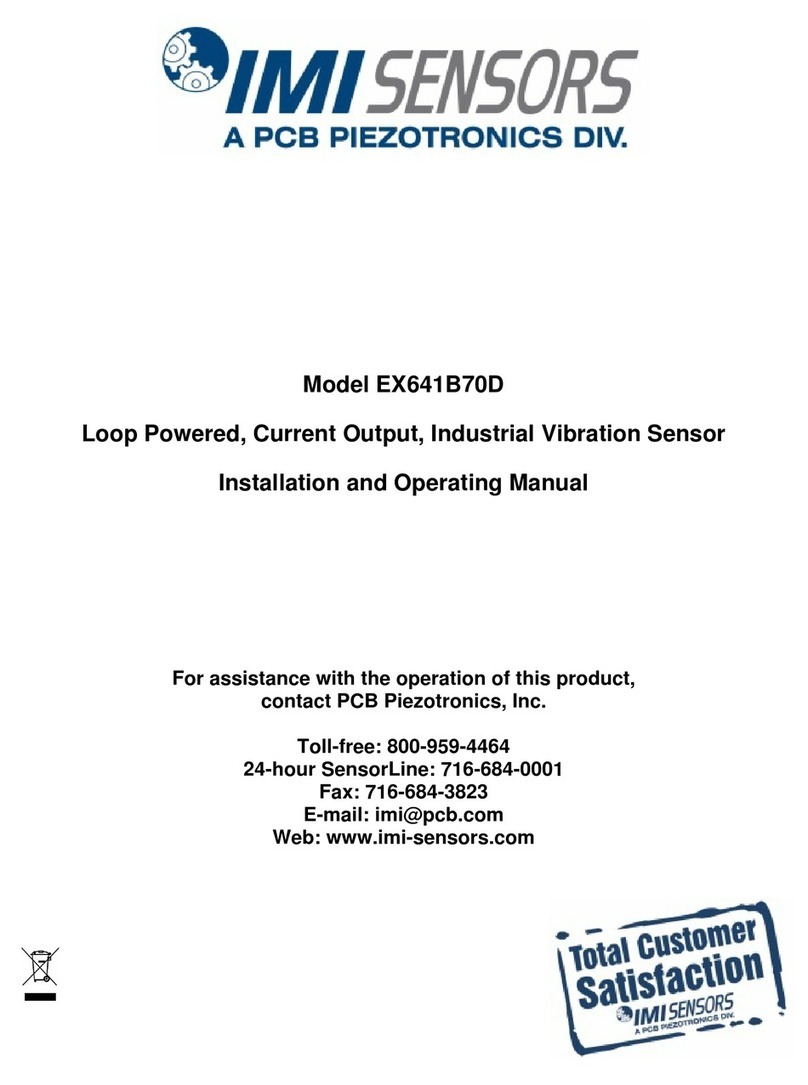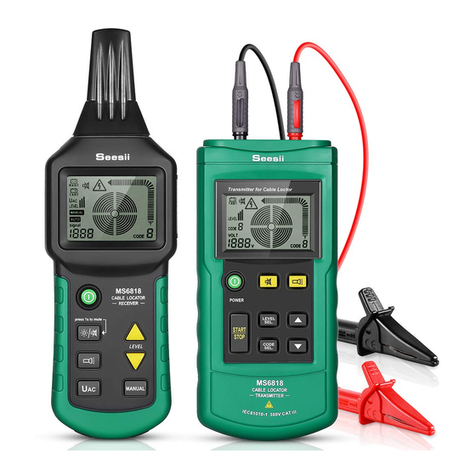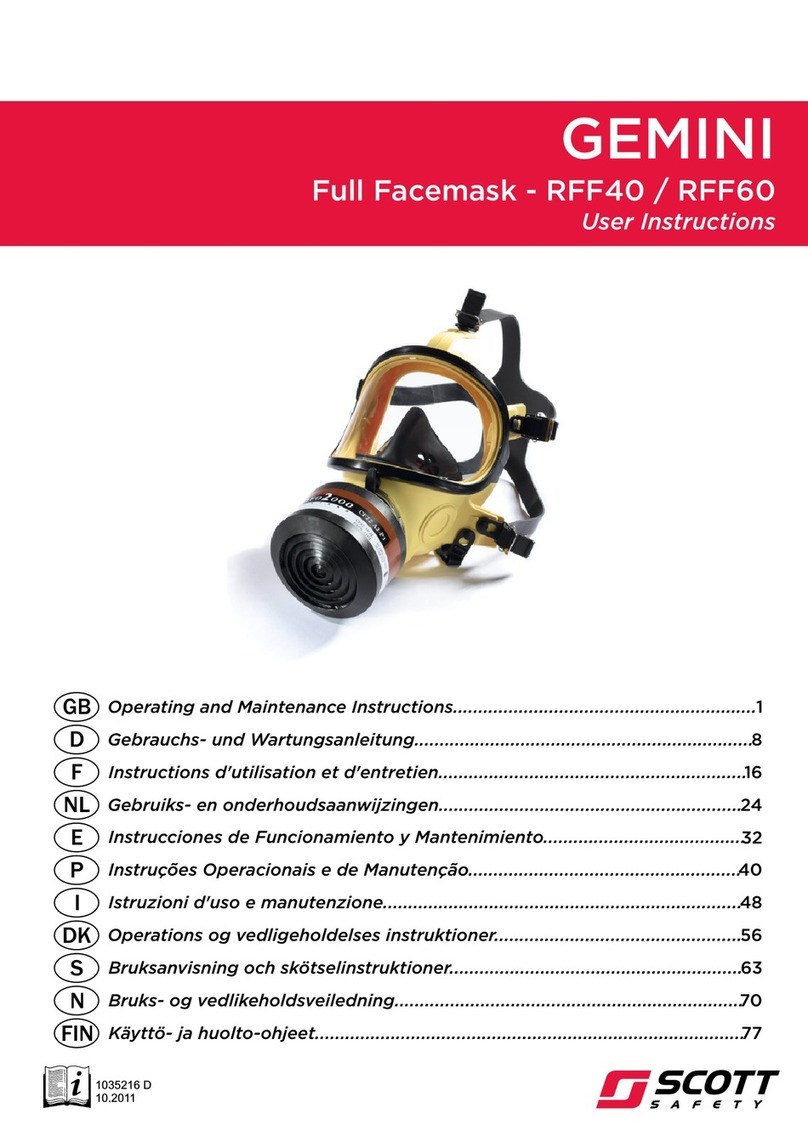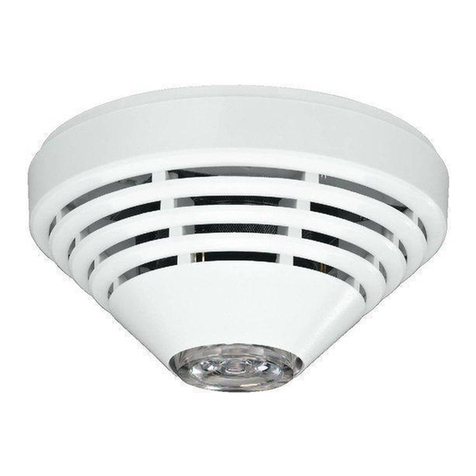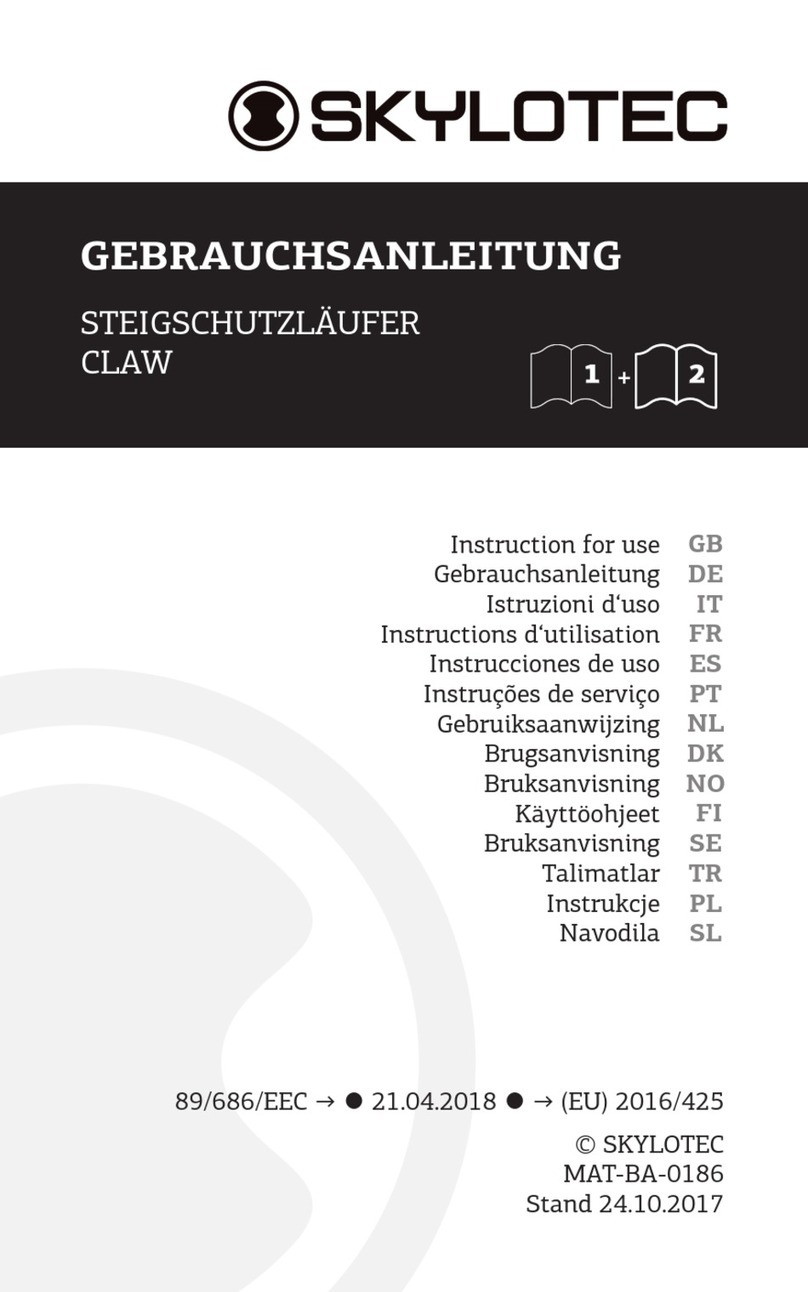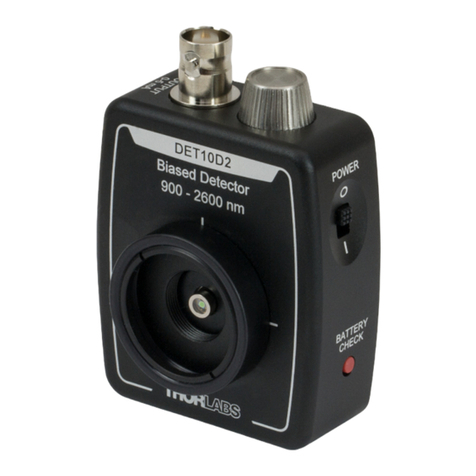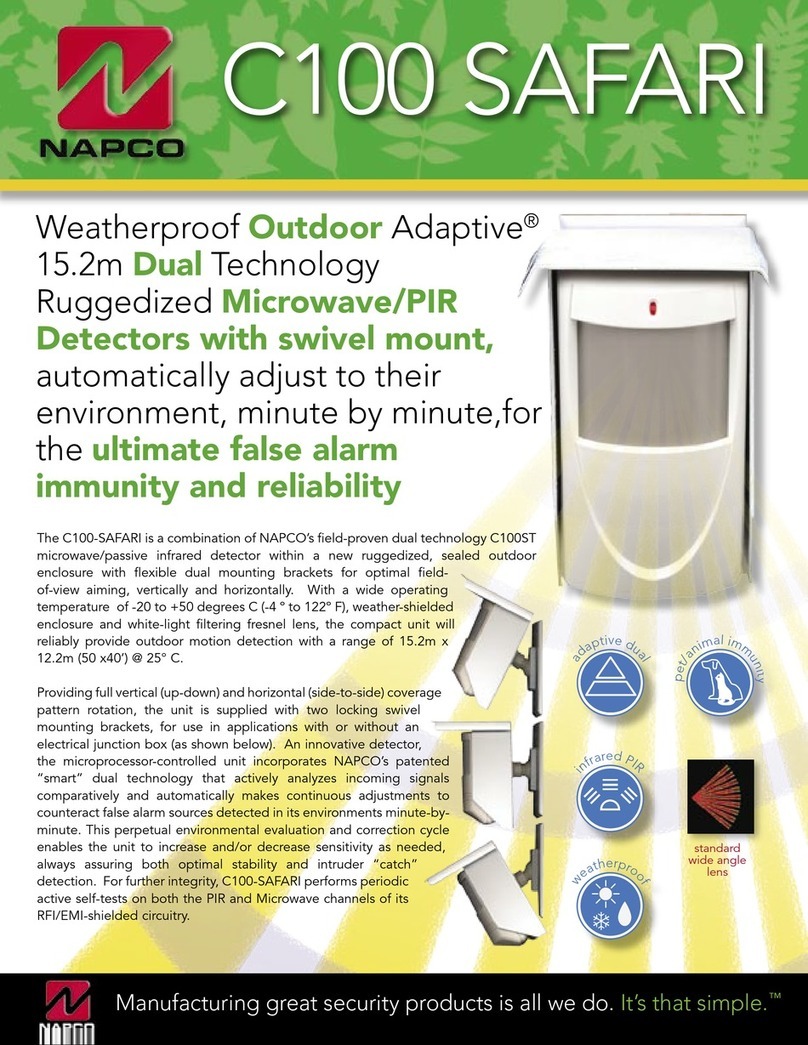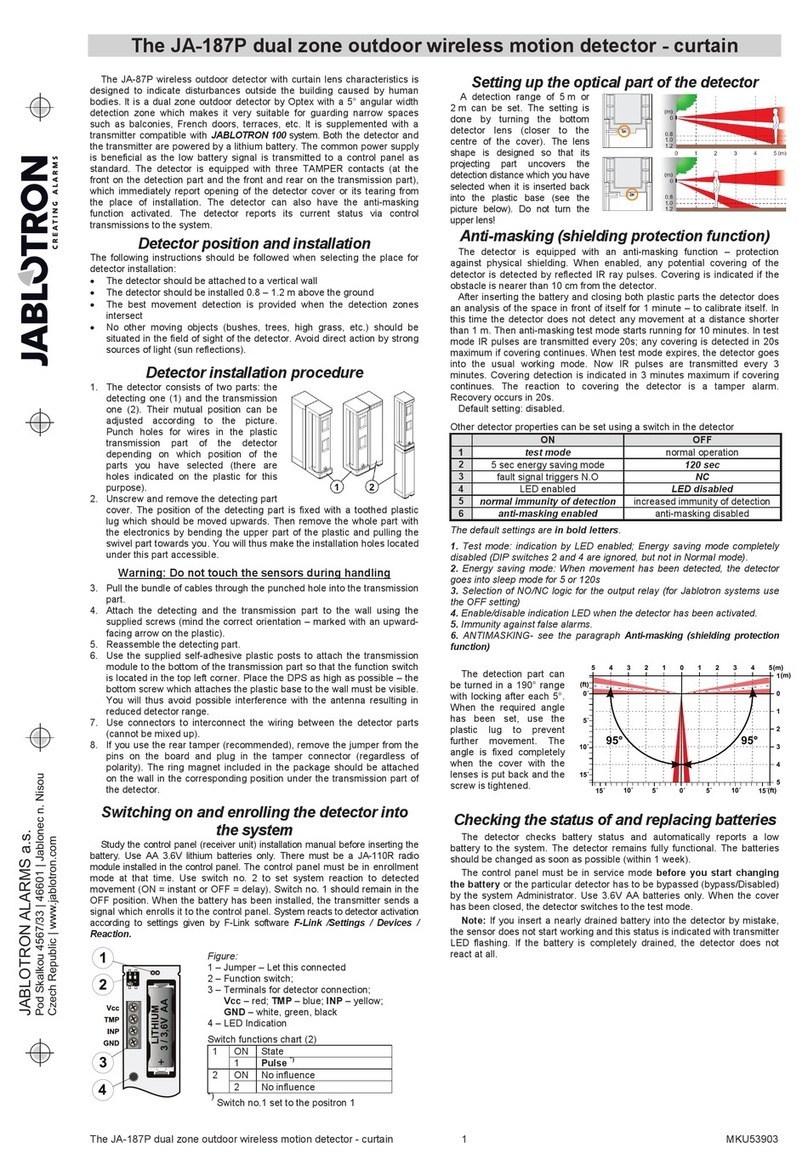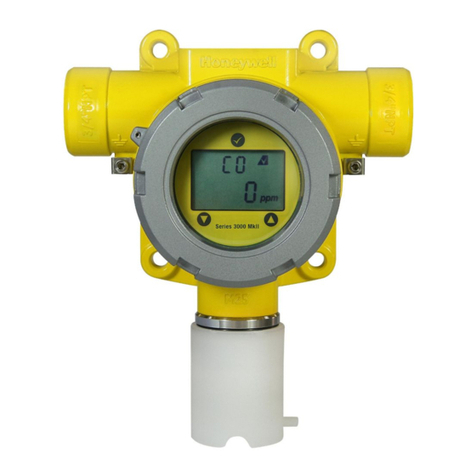T&D Martindale Electric TEK500 User manual

Martindale Electric Company Limited
Metrohm House, Penfold Trading Estate, Imperial Way, Watford, WD24 4YY, UK.
Tel: +44 (0)1923 441717 Fax: +44 (0)1923 446900
Website: www.martindale-electric.co.uk
Martindale Electric Company Ltd. Registered in England No. 3387451. Rev 2
Microwave Leakage Detector
INSTRUCTIONS
MARTINDALE
ELECTRIC
TEK500
3.4. After the microwave leakage test is found to give a satisfactory result, the following procedure can be used as
a simple functional test to assess the microwave heating power of the oven.
This functional test should be carried out with the microwave oven connected to its rated power source.
Fill the polypropylene beaker (supplied) with 275ml ± 15mls of tap water at a known temperature and place it in
the centre of the lowest shelf in the oven. Use the thermometer (supplied) to measure the initial temperature
accurately. Record the actual water volume and the Initial Temperature accurately.
DO NOT LEAVE THE THERMOMETER IN THE BEAKER.
The oven should then be operated at its maximum microwave power setting for 90 seconds.
FOR COMBINATION OVENS, WITH RADIANT HEATERS FOR ROAST OR BAKE SETTINGS, DO NOT RUN
THE OVEN AT RADIANT HEAT SETTINGS: USE MICROWAVE POWER ONLY.
(Note, The heating time is not critical, but must be recorded accurately: for an oven with an imprecise clockwork
timer, use a stopwatch or wristwatch with a second-hand to establish the duration of the test).
Immediately after the 90 seconds microwave heating episode, open the door, give the contents of the beaker a
very brief stir using the thermometer, then measure the final temperature of the water.
Determine the rise in temperature from:
Temperature Rise = (Final Temperature) - (Initial Temperature)
The microwave heating power of the oven can be estimated from the following formula:
Microwave Heating Power (Watts) = 4.19 X (Water Volume in ml) X (Temperature Rise)
Heating Time (seconds)
(Note: This formula is simplified for convenience. Result should be rounded down to nearest 50W).
3.5. At the end of all testing, ensure that the TEK500 has been switched OFF, before returning it to its carry case.
Calibration
The recommended calibration interval is 12 months. Martindale Electric will carry out routine calibration (on a
chargeable basis) if the instrument is returned, carriage paid, to the address on the final page of this document.
Alternatively, a chargeable collection and return service is available.
Repair & Service
There are no user serviceable parts in this unit. Return to Martindale Electric if faulty. Our service department will
promptly quote to repair any faults that occur outside the warranty period.
Storage Conditions
The Tek500 should be kept in warm, dry conditions away from direct sources of heat or sunlight and in such a
manner as to preserve the working life of the instrument.
Warranty
Faults in manufacture and materials are fully guaranteed for 12 months from date of invoice and will be rectified by
us free of charge, provided the unit has not been tampered with and is returned to us with its housing unopened.
Damage due to dropping, abuse or misuse is not covered by the guarantee. Nothing in these instructions reduces
your statutory rights.
CABLE JOINTS, CABLE TERMINATIONS, CABLE GLANDS, CABLE CLEATS
FEEDER PILLARS, FUSE LINKS, ARC FLASH, CABLE ROLLERS, CUT-OUTS
11KV 33KV CABLE JOINTS & CABLE TERMINATIONS
FURSE EARTHING
www.cablejoints.co.uk
Thorne and Derrick UK
Tel 0044 191 490 1547 Fax 0044 191 477 5371
Tel 0044 117 977 4647 Fax 0044 117 9775582

2.3. FOR COMBINATION OVENS, WITH RADIANT HEATERS FOR ROAST OR BAKE SETTINGS, DO NOT
RUN THE OVEN AT RADIANT HEAT SETTINGS DURING THE TESTS DESCRIBED BELOW: USE
MICROWAVE POWER ONLY.
2.4. MICROWAVES ARE POTENTIALLY DANGEROUS: MICROWAVE APPLIANCES SHOULD NOT BE
ADJUSTED OR REPAIRED BY ANYONE EXCEPT PROPERLY QUALIFIED SERVICE PERSONNEL.
It is important not to defeat or tamper with safety interlock switches. Before carrying out the leakage test, check
that the safety interlock switches on the oven operate effectively, such that the microwave power is cut OFF
automatically before the oven door can be opened.
3. OPERATING INSTRUCTIONS
3.1. Before use, the TEK500 microwave leakage detector MUST BE TESTED using the built-in self-test feature.
This 'TEST' function injects a microwave signal into the antenna of the detector to ensure that every stage of the
internal circuitry is operating correctly.
Slide the switch to the 'TEST' position and check that the 'SYS' and the three power indicator LEDs are
illuminated (for 1, 5 and 10mW/cm2respectively) and that the audible tone is present. If any of the four indicators
fails to illuminate, replace the battery and re-test the unit. If the unit will not illuminate all four indicators
simultaneously and operate the audible tone correctly during self-test, DO NOT USE IT, but instead return it to
Martindale Electric for investigation and repair according to the terms of your warranty.
3.2. If the self-test results are satisfactory, slide the switch to the 'ON' position and check that the power
indicators extinguish, that the audible tone is de-activated and that the green 'SYS' indicator is illuminated.
The TEK500 microwave leakage detector is now ready for use.
3.3. The following routine test should be carried out on microwave ovens, to ensure that microwave leakage
remains below the recommended safe maximum of 5 mW/cm2.
This routine microwave leakage test should be carried out with the microwave oven connected to its rated power
source.
Fill the polypropylene beaker (supplied) with 275mls ± 15mls of tap water at an initial temperature of 20°C±2°C
and place it in the centre of the load-bearing surface of the oven. Use the thermometer (supplied) to check this
initial temperature.
DO NOT LEAVE THE THERMOMETER IN THE BEAKER.
The oven should then be operated at its maximum microwave power setting.
FOR COMBINATION OVENS, WITH RADIANT HEATERS FOR ROAST OR BAKE SETTINGS, DO NOT RUN
THE OVEN AT RADIANT HEAT SETTINGS: USE MICROWAVE POWER ONLY.
While the microwave oven is running, place the flat tip of the cone against the surface of the appliance (Fig. 1)
and move the detector about slowly all over the exterior surface of the oven to locate points of microwave
leakage, paying particular attention to the door seal, the edges of the door, the front window, any seams in the
case construction and any ventilation slots visible.
The yellow LED indicator will signal when microwave power is detected above 1 mW/cm2. This is an acceptable level.
Hazardous radiation detected above 5mW/cm2& 10mW/cm2respectively is indicated by the red LED indicators.
An audible tone will sound as an additional warning of microwave leakage that is present above the 5mW/cm2
safety limit.
In the event of extended or repeated tests, the water in the beaker should be changed as necessary to prevent
boiling and evaporation.
An oven that exhibits microwave leakage in excess of 5mW/cm2should be taken out of service and investigated
for faults by a competent service engineer. It should not be put back into service until faults are cured and the
oven can be shown to pass the microwave leakage test.
1. INTRODUCTION
The TEK500 is a microwave leakage detector with a built-in self-test feature, LED indicators for microwave power
and an audible warning device.
The unit is designed to test for microwave leakage in accordance with the routine test defined within
BS EN 60335-2-25:2002, Safety of household and similar electrical appliances - Domestic microwave ovens, and
within BS EN 60335-2-90:2002, Safety of household and similar electrical appliances - Commercial microwave
ovens.
Further guidance on recommended maximum exposure levels to microwave radiation is contained in NRPB
Documents GS15_2 and GS15_3 published in 2004, and in the 1988 Recommendations of the International
Non-Ionizing Radiation Committee.
The above standards and guidance documents recommend that microwave leakage (expressed as microwave
power density in milli-Watts per square centimetre) from microwave ovens and similar appliances, should not
exceed 5mW/cm2, (which can also be expressed as 50W/m2), when measured at a distance of 50mm or more
from the exterior surface of the appliance under test.
The TEK500 indicates microwave power density at values of >1mW/cm2(Yellow LED), >5mW/cm2(Red LED) and
>10mW/cm2(Red LED).
The conical form at the back of the instrument makes it easy to maintain the prescribed distance of 50mm while
the instrument is moved over the exterior surfaces of the appliance under test.
TECHNICAL SPECIFICATION
Testing complies with BS EN 60335-2-25:2002 and BS EN 60335-2-90:2002
Supply: 9V alkaline battery, MN1604 or equivalent (not included)
Frequency of Operation: 2450 ± 25MHz
Power Density Range: ±1dB for planewave of all polarisations
Cardinal Points: >1mW/cm2, >5mW/cm2, >10mW/cm2
Response to Step Input: 2-3 seconds to reach 90% of steady state indication
Overload Capacity: 50mW/cm2
Indicators: LED (green) - Battery OK
LED (yellow) - 1mW/cm2- Acceptable microwave leakage below safety limit
LEDs (red) at 5 & 10mW/cm2and audible tone - Hazardous microwave leakage above safety limit
Cone Spacer: Prescribed test distance of 50mm is achieved when cone tip is in contact with appliance
Operating Temperature: -5°C to 40°C
Case: Yellow FR ABS
Dimensions: 150 x 64 x 30mm
2. WARNINGS
2.1. UNDER NO CIRCUMSTANCES MUST THE TEK500 BE PLACED INSIDE A MICROWAVE OVEN.
2.2. UNDER NO CIRCUMSTANCES MUST THE THERMOMETER (SUPPLIED) BE PLACED INSIDE A
MICROWAVE OVEN.
